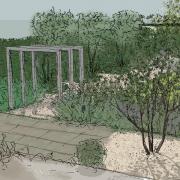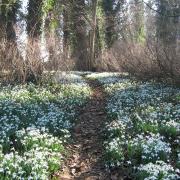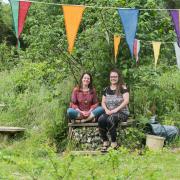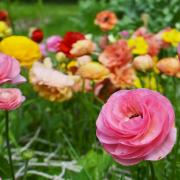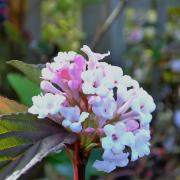Tree canopies turning from green hues to yellow and fiery reds, a treasury of seed heads and colourful fruits signal that autumn is with us.

Tree canopies turning from green hues to yellow and fiery reds, a treasury of seed heads and colourful fruits signal that autumn is with us. One of the stars of this time of year is the Cotoneaster, which comes in a great variety from low carpeting shrubs up to small trees. They are excellent wildlife plants, not only for the berries but also the flowers which are loved by bees.
One of the best ground-covering Cotoneasters is C. dammeri, a prostrate evergreen shrub ideal for covering banks and other difficult areas. Its white flowers in spring are followed by bright red berries in autumn.
A larger, more vigorous shrub is C. cornubia which can reach 6m or more. Its white flowers are followed by large red berries borne profusely creating a stunning effect, and it can also be grown as a small tree. Another strong growing Cotoneaster is C. rothschidianus, reaching up to 5m with a spreading habit when young. Its creamy-yellow berries really light up the autumn garden.
Cotoneasters grow in almost any soil except those which are waterlogged, in sun or part shade.
A perennial looking its best now is Liriope muscari (lily turf) which forms a low mat of glossy evergreen, grass-like leaves. In late summer it sends up budded flower spikes which open into densely packed violet-purple flowers throughout the autumn. There is also a white form L.m. Monroe white which is not such a strong grower as the species. A good variegated variety is L.m. Gold Band, which as its name suggests has a golden yellow edge to its dark green leaves with the same violet purple flowers as the species. A good variety to brighten a shady spot is L.m. Pee Dee Gold Ingot which has bright yellow new foliage in spring, darkening slightly in summer when grown in the shade, providing the perfect contrast to the violet-purple flowers.
Plant of the month
Nerine bowdenii
Nerine bowdenii, with its lightly scented, bright pink, trumpet-shaped blooms carried on a leafless stem to around 60cm, is a flower to brighten even the dullest autumn day. The strap-like leaves appear after the flowers die back in late spring leaving the plant dormant in summer. They prefer well-drained soil in a sunny position, with the neck of the bulb just above the surface. A mulch can be applied in the first winter of planting to protect them from severe frosts until established.
Question time
My Acer is getting pot-bound. When is the best time to re-pot it?
The best time to re-pot Acers is in the spring just as they are coming into growth, as the new roots will quickly spread into the fresh compost. Don’t be tempted to replant it in too larger pot; one leaving about 2.5cm of space around the current rootball will be sufficient.
Catch up with Keith
Remove shading from greenhouses to allow in the maximum amount of light throughout the winter period.
This month is the ideal time for planting while there is still some warmth in the soil to help plants get established.
Check and treat tender plants for pests and diseases before moving them inside for the winter.
Taverham Nursery Centre, Fir Covert Road, Norwich, NR9 6HT; 01603 860522; www.taverhamnursery.co.uk




